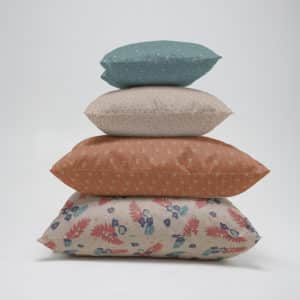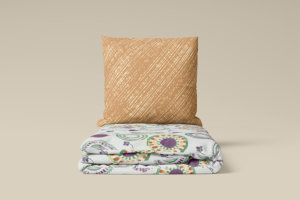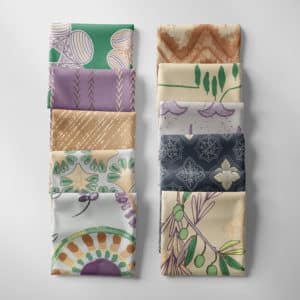HAVE YOU EVER wondered who designed the print and pattern on the bedding, home décor, or accent pillow you’re printing for your clients? With digital printing technology enabling more artists and consumers to create and sell products through print-on-demand businesses and online marketplaces, it’s important to understand the role surface designers play in our industry. Without surface designers and the cool prints they create, where would the fun be in digital printing?
LinkedIn is a great place to start. That’s where I connected with Robin Childers of Verline Studio and what inspired the idea to share her work with you. Read on to get a snapshot of what it’s like to be a surface designer and what’s behind the inspiration for this South Carolina artist and her expertly crafted work.
Q: Robin, it’s always great for print professionals and the folks on the technical side of things to connect with surface designers to learn more about your unique process and artistic expertise. Can you give us a brief background on your formal education and training in fiber arts and the clients you currently serve?
A: I graduated from Savannah College of Art and Design with a BFA in Fiber Arts. I was very fortunate to start working as a textile designer in women’s fashion in my hometown. My training in college was in traditional development of designs for printing but I started working on a CAD system right away in my first position. My traditional training helped me understand the process of making a pattern, which made it easier to work in a CAD system. I also worked in a printing manufacturing facility where I learned the whole process, from engraving (creation of rotatory screens) to printing and finishing of fabric.
Q: On your website, you describe yourself as a surface designer and artist who creates “comforting and idyllic patterns.” How did you develop your style and what are your greatest influences?
A: My greatest inspirations are historic designs, nature in the area where I live [upstate South Carolina], and the places I’ve visited. I am always looking for interesting motifs and images to use in my designs, so I have a camera in my hands most of the time.
Q: What interested you the most about surface design at the start of your career?
A: My parents encouraged my artistic talent and I saw surface designs as a way to be creative. During high school, I worked part time in the sample department of the printing manufacturing facility where I started after college. That first exposure to surface design and the printing process is how I became interested in surface pattern design.
Advertisement

Q:Can you help us understand the creative and technical nuances of digital printing from a surface designer’s point of view?
A: The most difficult part is being able to keep the beautiful original feel of the artwork throughout the process of creating a design – keeping your vision while conveying that as a printed pattern. You create work in one medium and then you have to interpret it on a different substrate and medium. The printer and artist need to work together to find the best way to keep the feel of the original artwork.
Q: Aside from licensing and collaborations, you also have a Spoonflower shop! Because digital printing and online marketplaces have become more accessible to both artists and consumers, what do you like the most?
A: I love the easy accessibility of a finished product for artists and consumers alike. You can customize the pattern for your client. I believe you can be very creative with digital printing, more than some traditional processes. Secondly, I enjoy collaborating with my clients and other creatives, helping them create patterns and colorways that express their vision of the product and brand. The pattern should be an extension of the product that draws in customers. The best advice I can give is to understand the product to match the best layout and product materials for the best customer experience.
Advertisement
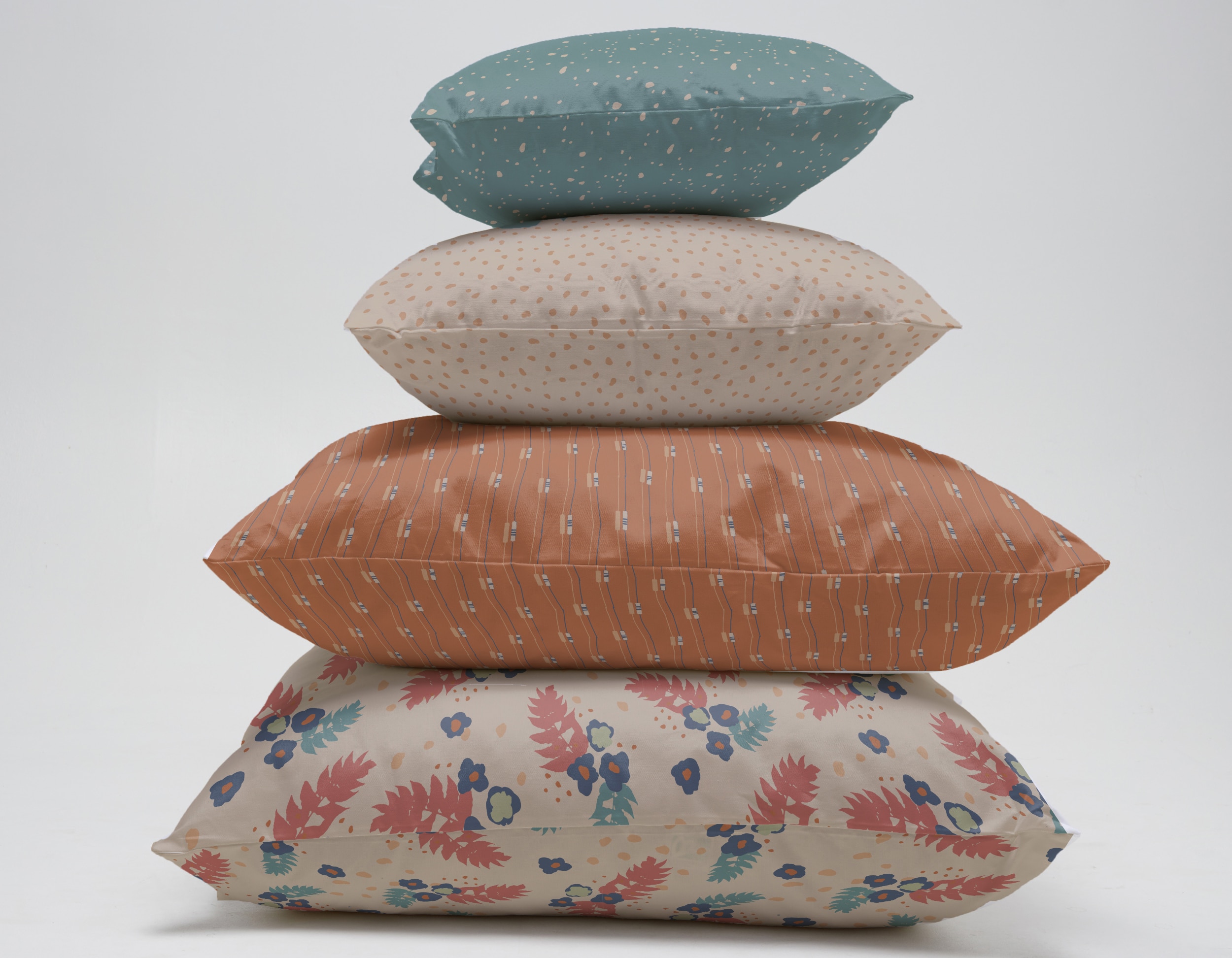 Robin Childers believes “you can be very creative with digital printing, more than some traditional processes.”
Robin Childers believes “you can be very creative with digital printing, more than some traditional processes.”
Q: Are there any printing substrates and applications you’re still looking forward to exploring?
A: Yes, I would love to print on tile and wood products.
Q: What’s next for Verline Studio in 2023? Anything you’d like to share about what you’re anticipating for the future?
A: Right now, I’m focusing on a collection of wallcoverings. (Stay tuned!)
Robin Childers
[email protected]
864.384.4497.
Linkedin: Robin Childers
Instagram: @verlinestudio
PHOTO GALLERY (4 IMAGES)
Advertisement


 Best of Wide Format2 months ago
Best of Wide Format2 months ago
 Best of Wide Format2 months ago
Best of Wide Format2 months ago
 Blue Print3 weeks ago
Blue Print3 weeks ago
 Best of Wide Format2 months ago
Best of Wide Format2 months ago
 Best of Wide Format2 months ago
Best of Wide Format2 months ago
 Best of Wide Format2 months ago
Best of Wide Format2 months ago
 Best of Wide Format2 months ago
Best of Wide Format2 months ago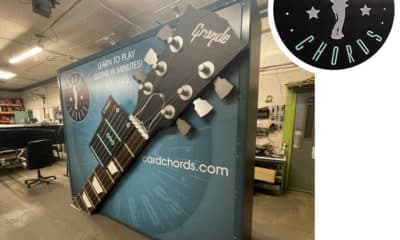
 Best of Wide Format2 months ago
Best of Wide Format2 months ago

 Robin Childers believes “you can be very creative with digital printing, more than some traditional processes.”
Robin Childers believes “you can be very creative with digital printing, more than some traditional processes.”